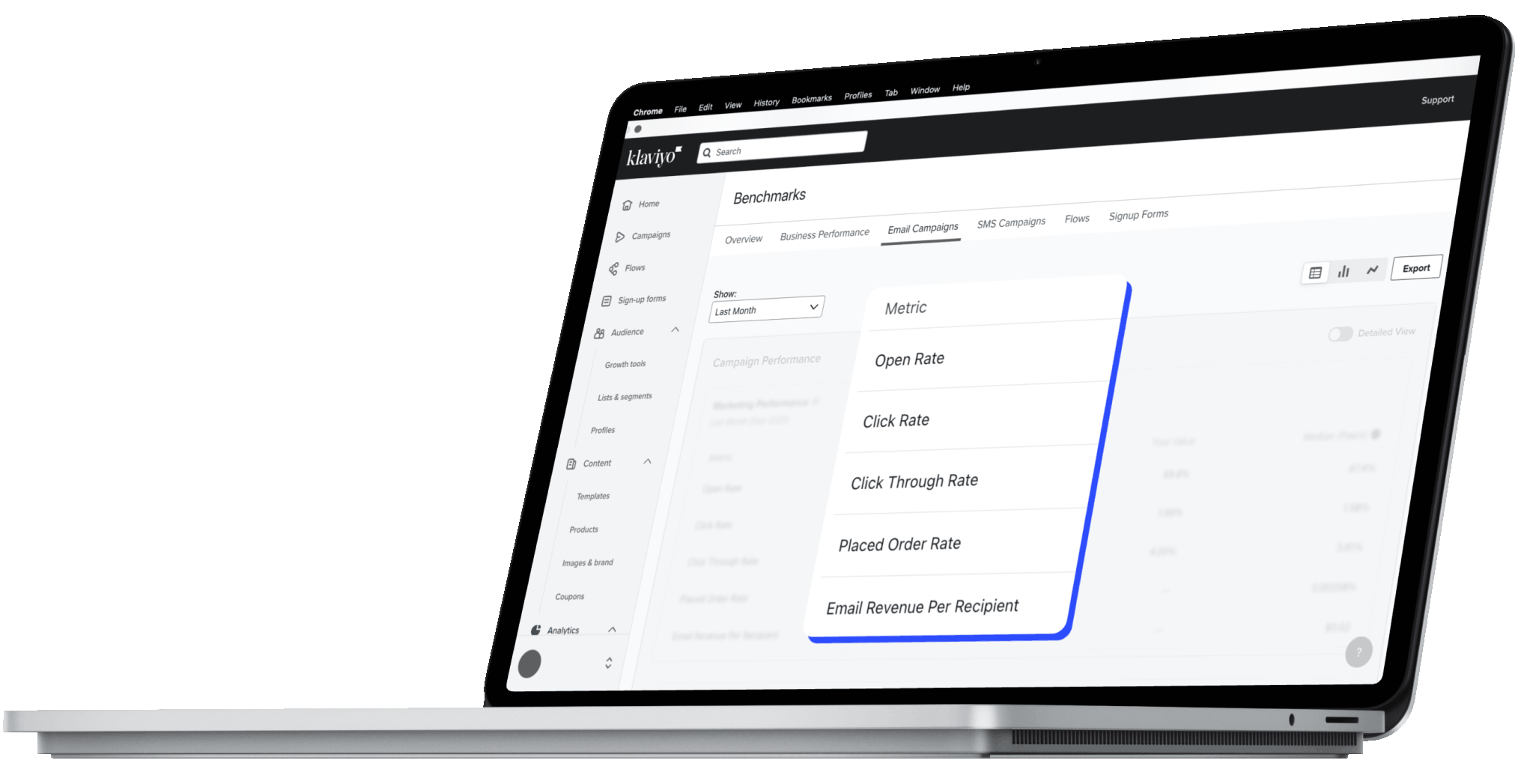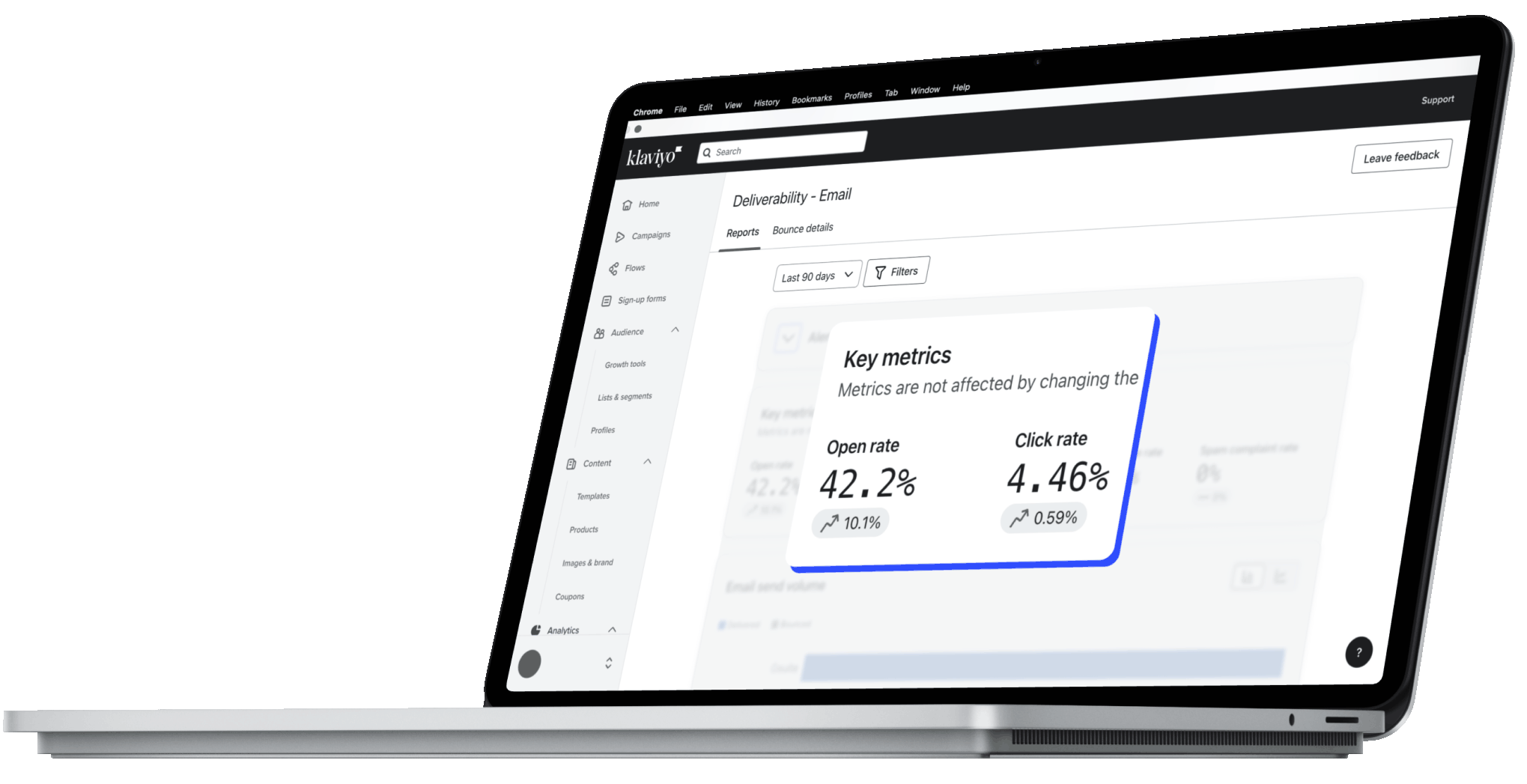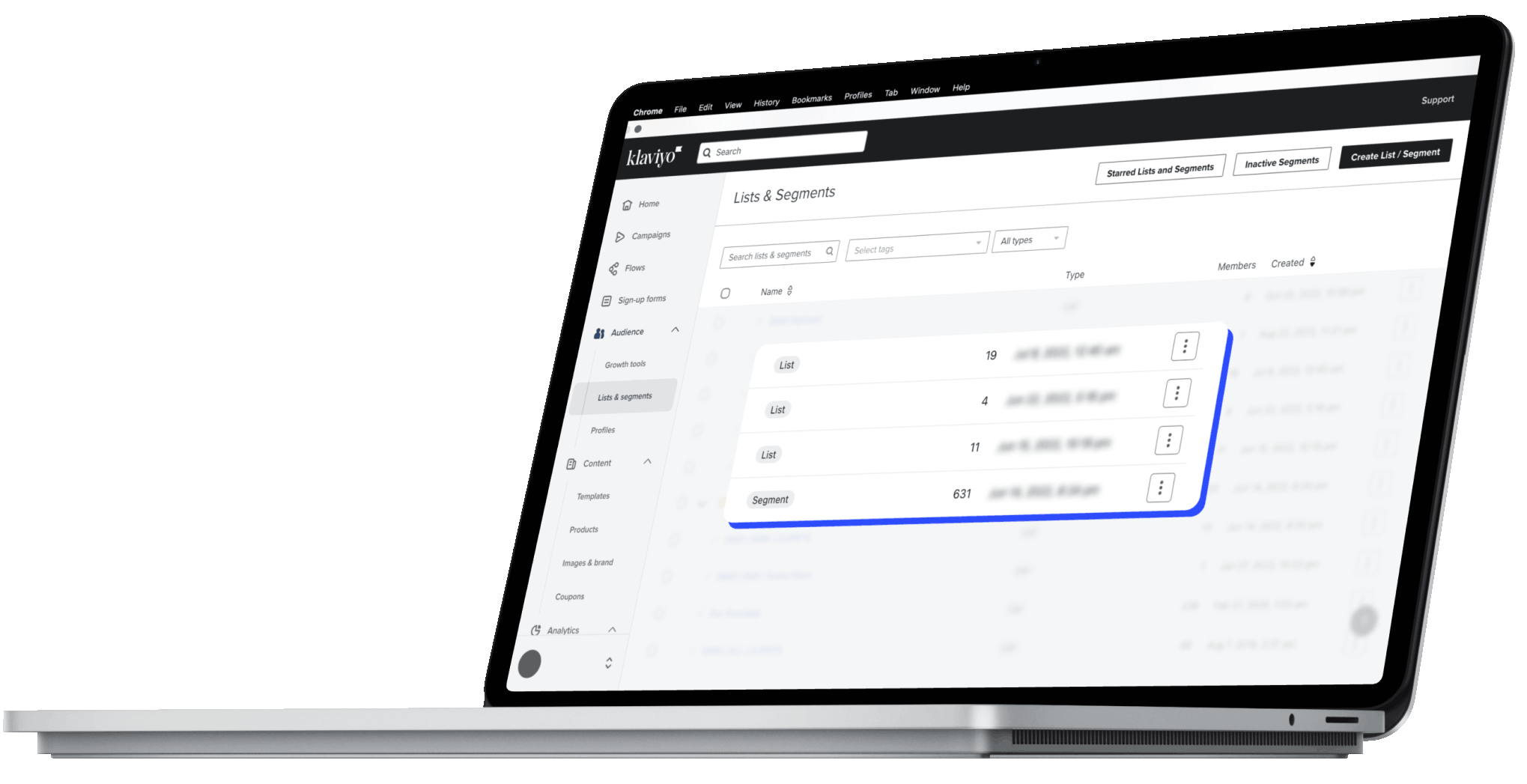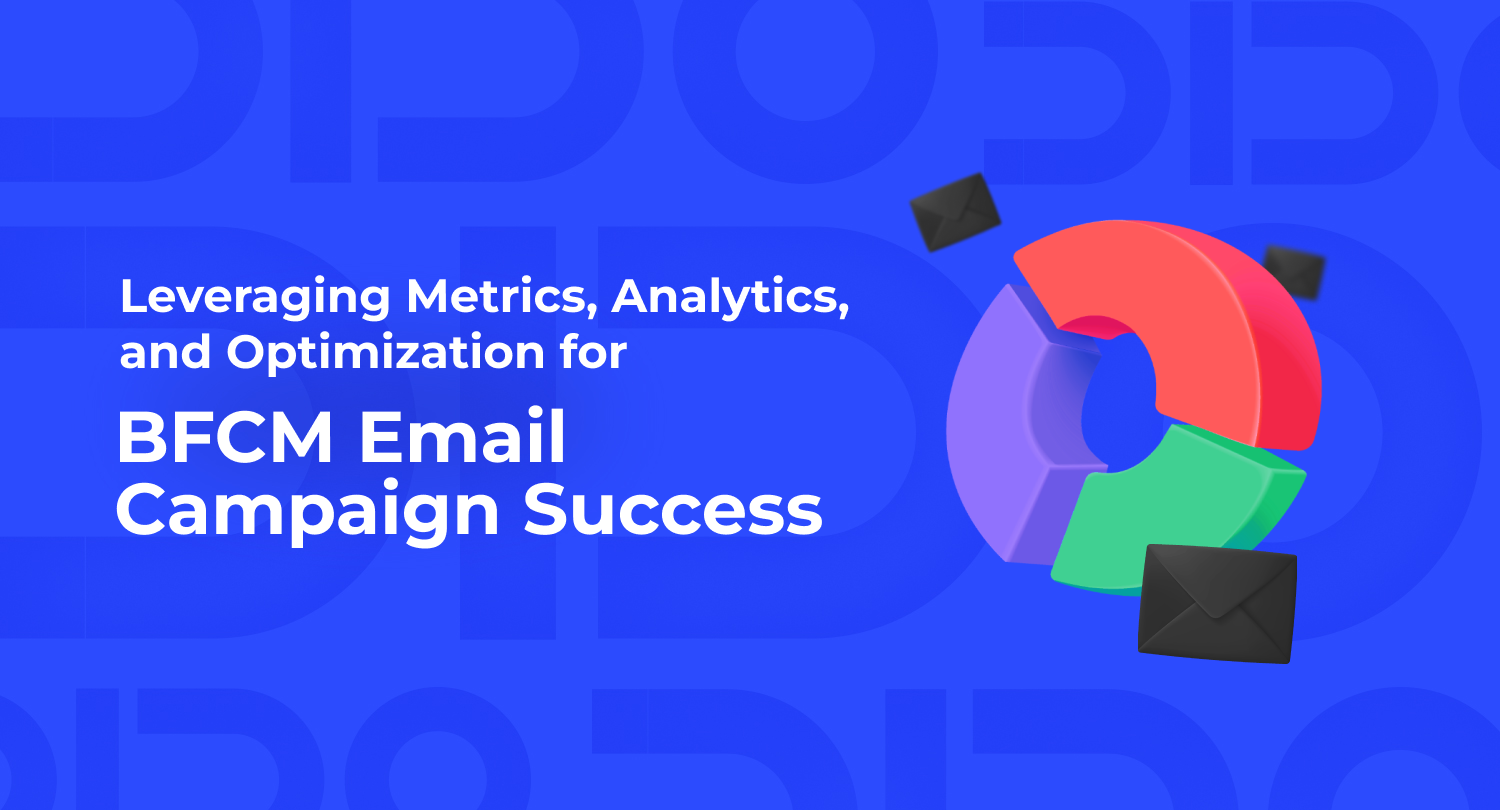Black Friday and Cyber Monday (BFCM) are some of the most anticipated shopping events of the year, and email marketing plays a crucial role in driving sales and engaging customers.
However, sending BFCM email campaigns without considering metrics, analytics, and optimization is a missed opportunity for success. Evaluating performance data is a key aspect of BFCM email marketing efforts, offering insights that can be used to make tweaks and changes to maximize your success.
Not sure where to start? Don’t worry. We’ll highlight our top metrics, analytics tools, and methods for optimization to help you knock it out of the park this BFCM.
Tracking Key Metrics
When it comes to email marketing, there are 5 key metrics that are important to monitor year-round, especially during BFCM.
1. Open Rate
The open rate indicates the percentage of recipients who opened your email. A high open rate means your subject lines are engaging and enticing, making people want to open your email. Monitoring your BFCM open rate can indicate if your subject line strategy is working or if it needs to be re-evaluated for the next round of sends.
2. Click-Through Rate (CTR)
CTR measures the percentage of recipients who click on links within your email. A high CTR indicates your email offers engaging content and compelling call-to-action buttons that make people want to click. Analyzing your BFCM CTR helps identify which products, offers, or CTAs are capturing the most attention.
3. Conversion Rate
The conversion rate reflects the percentage of recipients who completed the desired action, such as making a purchase or signing up for a webinar. Keeping up with your conversion rate during BFCM lets you know if your emails are successfully driving the sales that you want, or if you need to try something different.
4. Bounce Rate
Bounced emails occur when emails are undeliverable, either due to invalid email addresses or other issues. High bounce rates can negatively impact your sender reputation and increase your chances of landing in spam. Watch your bounce rate and regularly clean your email list – both during BFCM and throughout the rest of the year.
5. Unsubscribe Rate
This metric tracks the number of recipients who opt out of your emails. Some unsubscribes are inevitable, but a sudden surge in unsubscribes can signal that something isn’t resonating well. If your unsubscribe rate skyrockets during BFCM, you might consider switching up the type of content you’re sending or the frequency of your emails.

Utilizing Email Analytics Tools
Staying on top of the 5 metrics mentioned above is easier when you leverage the power of email analytics tools. Here are 3 tools that make metrics easier.
1. Google Analytics
Integrating Google Analytics with your email campaigns can help track traffic to your website from email link clicks. This provides insight into how many users are actually clicking through your email, and what they’re doing once they get to your site.
2. Email Service Provider Analytics
Email service providers like Klaviyo, Mailchimp, Constant Contact, and HubSpot give you access to in-depth email analytics within their platforms. These tools provide real-time data on open rates, click-through rates, and more to help you stay on top of your campaigns.
3. Urchin Tracking Module (UTM) Parameters
UTM parameters are tags that can be added to URLs to help you track how visitors are getting to your website, and whether or not it’s the result of a campaign. Tracking the sourced of website traffic can help you evaluate and compare the effectiveness of specific campaigns.

Optimizing Your Email Campaigns
After looking into metrics and trying out analytics tools, it’s time to put what you’ve learned to use and optimize your BFCM campaigns. Here are 5 ways you can experiment with optimization to make the most out of a busy sales season.
1. Personalization
Tailor your emails to individual recipients by including their names, recommending products based on past purchases, and using other personalized data to send the right content to the right person at the right time.
2. Segmentation
Divide your email list into segments based on specific criteria like demographics, buying behavior, or engagement level. Segmentation allows you to send targeted emails to the groups they’re most relevant to.
3. A/B Testing
A/B testing is a good way to identify what works and what doesn’t. Experiment with different subject lines, email content, and call-to-action buttons to identify which elements are the most effective for your audience.
4. Mobile Optimization
In our digital-first world, an email that can be read on desktop and mobile is non-negotiable. Ensure your emails are responsive and visually appealing on all devices because a seamless experience is a good experience.
5. Timing
Experiment with email send times to determine when your audience is most responsive. Test different days and times to find the optimal schedule for your BFCM emails, especially if your audience is global.

Wrap Up
The success of your BFCM email marketing efforts depends on your ability to measure performance and make data-driven optimizations to improve results. By tracking key metrics, utilizing email analytics tools, and implementing optimization strategies, you can create email campaigns that not only capture attention but also drive sales and engagement. As you prepare for this year’s BFCM period, remember that data-driven insights will only improve your email marketing endeavors!
